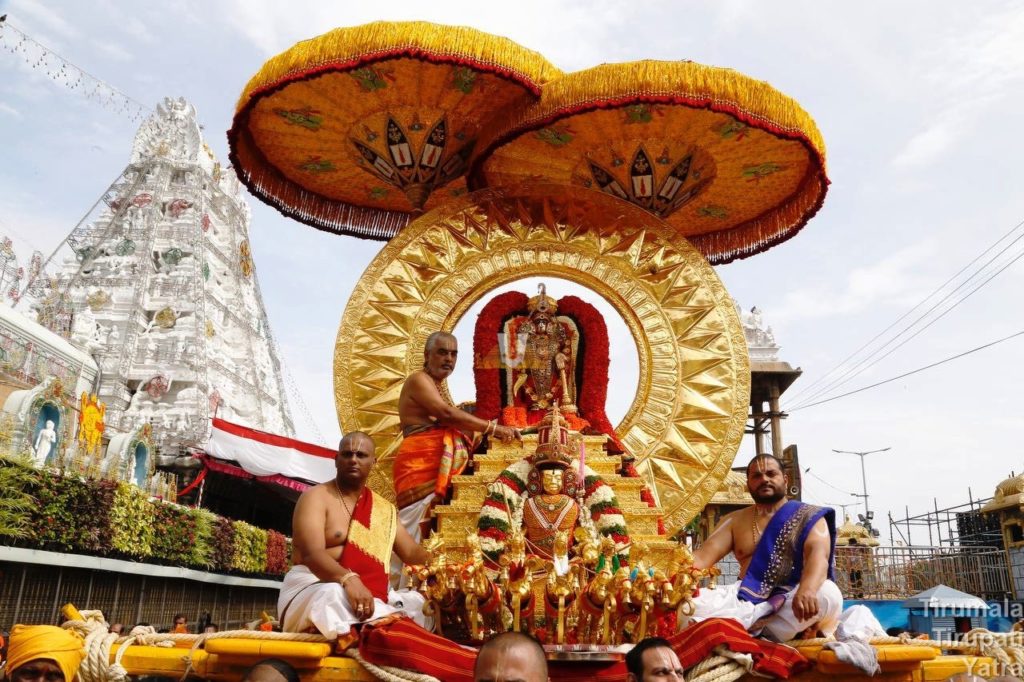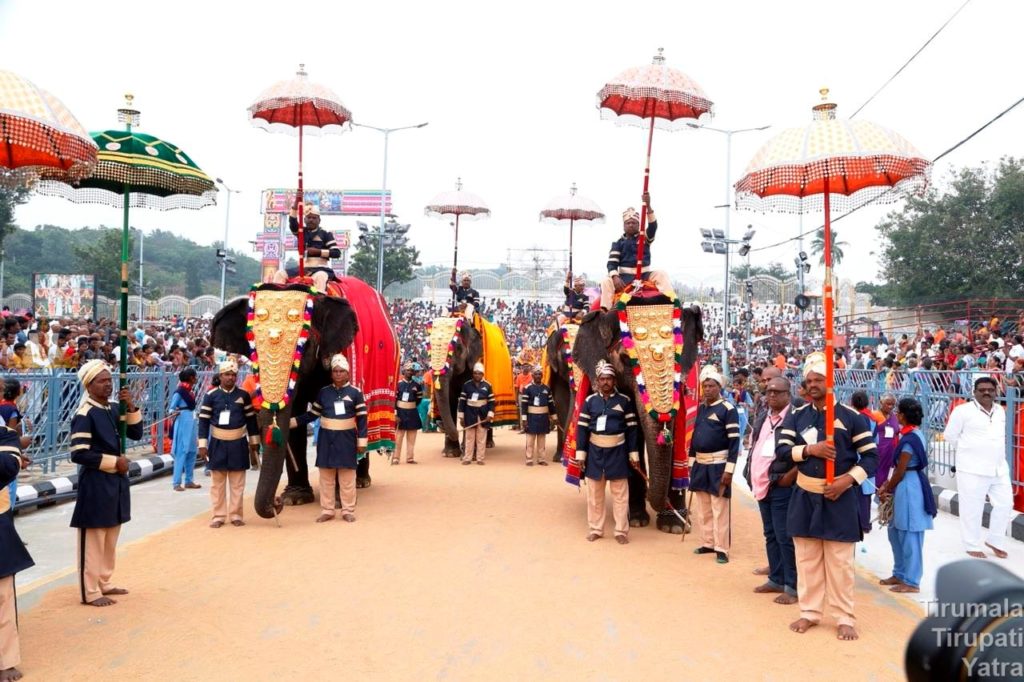Navamam Navaratnamcha Brahma cha Kamalasanah
NidhiGrahascha Khandamcha Randhro Bhavascha Labdhakah
- Navamam,
- Navaratnam,
- Brahma,
- Kamalasana,
- Nidhih,
- Grahah,
- Khanda,
- Randhra,
- Bhava and Labdhakah-these ten are the names of number nine.
In the Dictionary of Symbols, the name Brahma indicates nine Brahmas and thereby, the number nine. The festival celebrated by Brahma in the name of Sri Venkateswara went on for nine days, from Dhwajarohana to Dhwajavarohana.
So the name of Brahmotsavam is appropriate for the grand festival that goes on for nine days.
Three more Brahmotsavams
Besides the annual Brahmotsava, there are three more Brahmotsavams that take a day each-Arsha on Rathasaptami, Rakshasa on Kaisika Dwadasi, and Daivika on Mukkoti Ekadasi, all of which are celebrated in Tirumala.
Gods were invited
All the gods were invited to the grand festival celebrated by Brahma for Lord Venkateswara. Indra and the other Lords of the Directions (dikpalas) visited Venkatadri on their chariots.
All the royal devotees in India followed suit, with pious intentions. Devotees and the commoners from all parts of the country reached Venkatadri, repeatedly chanting the sacred name of Govinda.
Lord Srinivasa whom even the best of yogis might not witness, manifested himself in person, out of love for all the living creation. Brahma invited Viswakarma, the doyen among sculptors and made him build in and around the hill, keeping in view, gods and human beings, guest houses, choultries, and shelters for cool water for all.
He arranged all amenities for all the invitees, guests and devotees. All those who came to take part in the festival said in praise of Brahma:
Angeechakara vidhina nirmitancha mahotsavam
Utsave darsanam punyam Srinivasasya Sarnginah
“Srinivasa gave his consent for the celebration. Brahma is performing the same very well indeed. During the festive days, it is a blessing to visit Srinivasa, holding a bow”.
Mada Streets during Brahmotsavams
All the streets around the temple of Tirumala were beautifully decorated with flags, gem-studded festoons, flower garlands, and plantain trees. The sages performed homas with Vedic chants in enclaves and got up for the yajna.
Brahma decorated Srinivasa with gorgeous ornaments offered by Kubera and offered special services.
He offered six kinds of prasada made of rice treated with dal and mixed with ghee-gudanna, mudganna, madhuranna, dadhyanna, besides tilapupa, mashapupa, manohara and modaka along with fruits of several varieties and delicious ambrosia – like curries specially prepared for the occasion on a massive scale.


